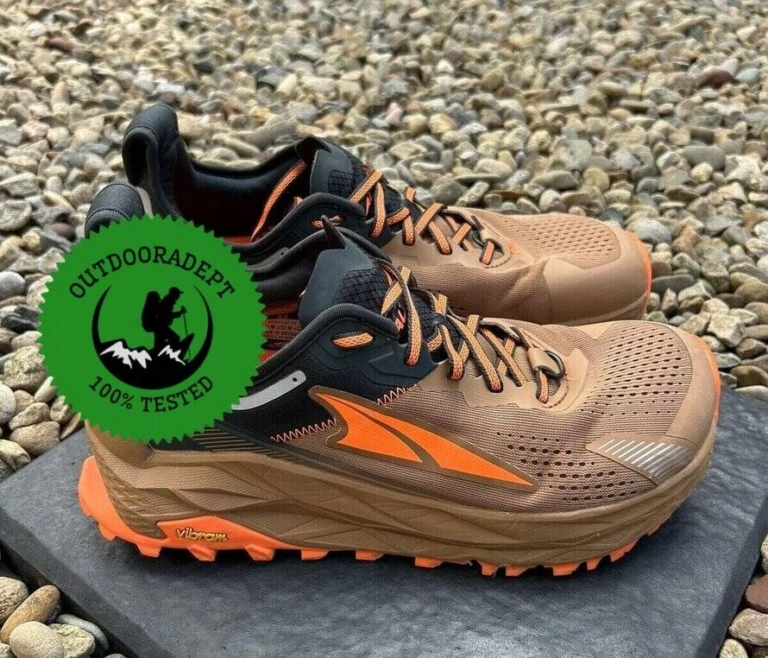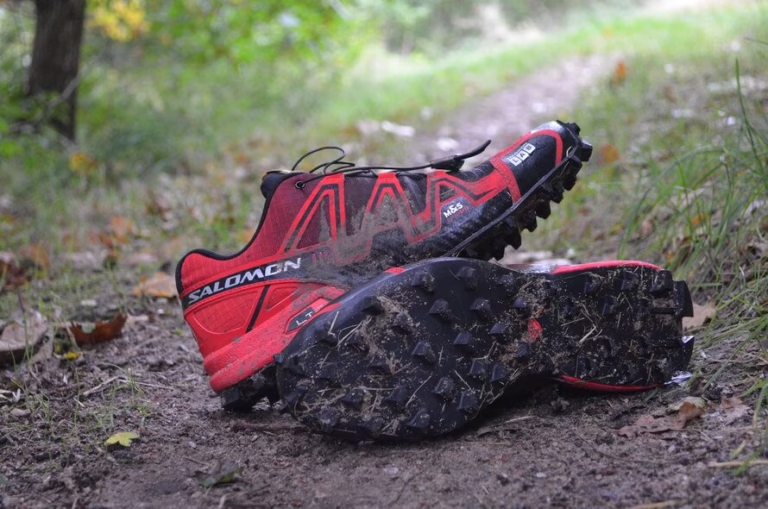When I decided to test the Brooks Caldera 7 during a multi-week trail running shoe testing series in the Philippines’ Cordillera Mountains, I was curious about how it would handle steep inclines, mud, and rough terrain.
This particular area offers everything from slick rock surfaces to packed dirt roads, and it’s ideal for testing a shoe designed to handle varied terrain.
The new Brooks trail shoe comes with several updates from the previous version, including a DNA Loft v3 midsole for smooth cushioning, a Brooks Caldera 7 outsole tweak for better traction, and a reinforced upper constructed with recycled materials.
While it’s slightly heavier, I immediately noticed it is highly supportive, which suggests it’s built for longer distances. Let’s see how the Brooks Caldera 7 performed once I truly put a foot forward on those mountain trails.
Our Verdict 4.3/5
The soft midsole foam ensured a very stable ride that made each step feel secure, even on steep ascents and rocky descents. I was impressed by how the shoe’s robust DNA v3 midsole and durable TPEE mesh upper held up mile after mile.
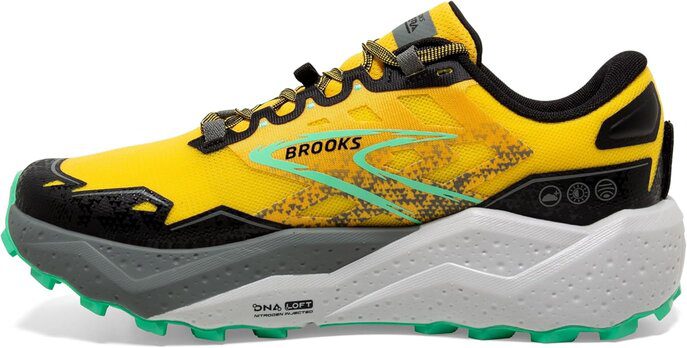
After a thorough test run on rugged trails, the Brooks Caldera 7 shoe clearly stands out for its dependable long-mile performance.
However, honesty calls for a note of caution: its extra heft means it doesn’t deliver the nimbleness some trail runners might desire on challenging surfaces, and traction can waver in the mud.
In short, if you prioritize comfort and stability over lightning-fast agility, the Caldera 7 is a solid pick for extended adventures.
To deliver a well-rounded review of the Brooks Caldera 7, we conducted in-depth testing across a wide range of terrains, including well-groomed trails, technical rocky paths, muddy tracks, and loose gravel. We evaluated its water resistance in wet conditions and examined how it held up in high-heat environments to assess overall durability. Both our in-house testers and seasoned trail-running experts assessed the shoe’s break-in period and long-term comfort during extended runs. We focused on essential performance factors such as fit, cushioning, traction, and breathability. In addition, we gathered feedback from everyday users and examined the manufacturer’s warranty to provide a complete and balanced perspective on the Caldera 7.
This is a discontinued model. For the latest Brooks review, check out our Brooks Cascadia 18 review.
Brooks Caldera 7 Features
- Upper Material: TPEE air mesh with reinforced overlays
- Waterproofing: No
- Midsole & Cushioning: DNA Loft v3 foam
- Outsole & Grip: Brooks Caldera 7 outsole with reconfigured lugs
- Weight: ~10.6 oz (300g) for men’s size 9
Brooks Caldera 7 Pros & Cons
PROS
CONS
Detailed Performance Breakdown
1) Durability
Durability is one of the Brooks Caldera 7’s strong suits, and it really came through on my rugged mountain trek.
The TPEE air mesh upper, bolstered by recycled overlays, stood up well to constant scrapes and bumps, retaining its form and structure. I especially appreciated how the DNA v3 midsole kept delivering plush cushioning without showing much wear, even after several challenging runs.
That said, on the most abrasive parts of the trail, I did notice a few minor issues—small wear marks along the seams and slight fraying in high-contact areas. These flaws are hardly deal-breakers, but they’re worth noting for those who push their gear to the extreme.
2) Traction
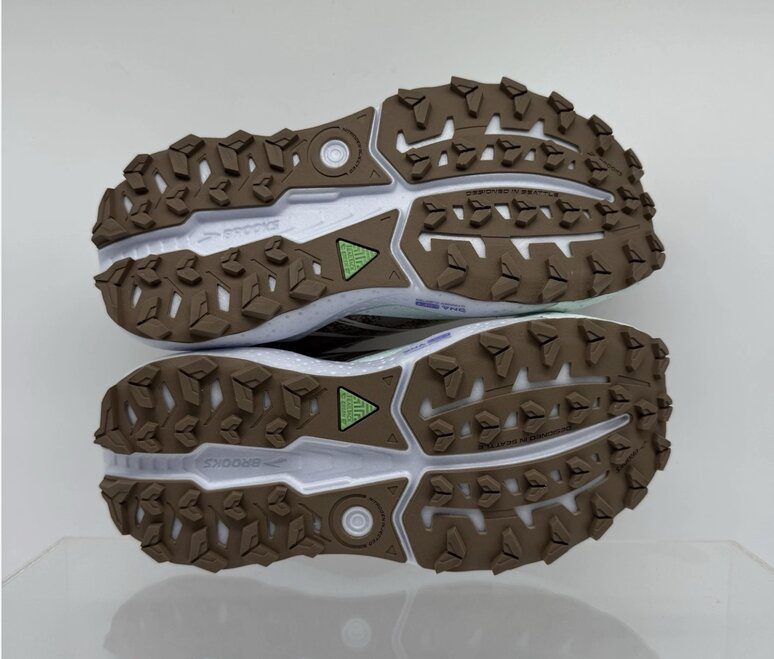
The updated Brooks Caldera 7 outsole is designed for varied terrain, offering a better traction profile than the previous version.
On gentle trails and moderate route conditions, I found the shoe locked onto surfaces with confidence, whether I was running uphill or descending packed soil.
However, in genuinely technical terrain—like rocky, wet slopes—the lug design provided only a decent grip, not top-tier for extremely gnarly cross-country courses. Also, in deep mud, the outsole lugs can clog and reduce grip.
For runners looking for a trail running shoe that’s outstanding in rough, slippery conditions, there might be other shoes with more aggressive lug patterns like the Topo Ultraventure 3. Still, for a do-it-all approach, this Brooks Caldera update holds its own admirably.
3) Weight
At first glance, you’ll notice that this shoe is hefty. And that’s true – weighing around 10.6 oz (300g) in men’s size 9, the Brooks Caldera 7 trail running shoe is no featherweight.
However, despite being heavier than some nimble shoe alternatives like the Hoka Speedgoat 5, that heft comes with a trade-off: more cushioning, more stability in the midfoot area, and a generous platform that fosters a good level of stability.
If you are like me and prefer long runs, you know it’s often worth having that extra padding and bounce under the forefoot (20 mm) and heel (26 mm).
Still, if you crave maximum agility in chaotic environments, you might feel the sheer size of this cushioned shoe when trying to pivot quickly or leap across boulders.
In my experience, the weight never felt overwhelming on moderate trails, but on faster, short-distance training efforts, you may miss a lightweight build for race-like speed.
4) Support
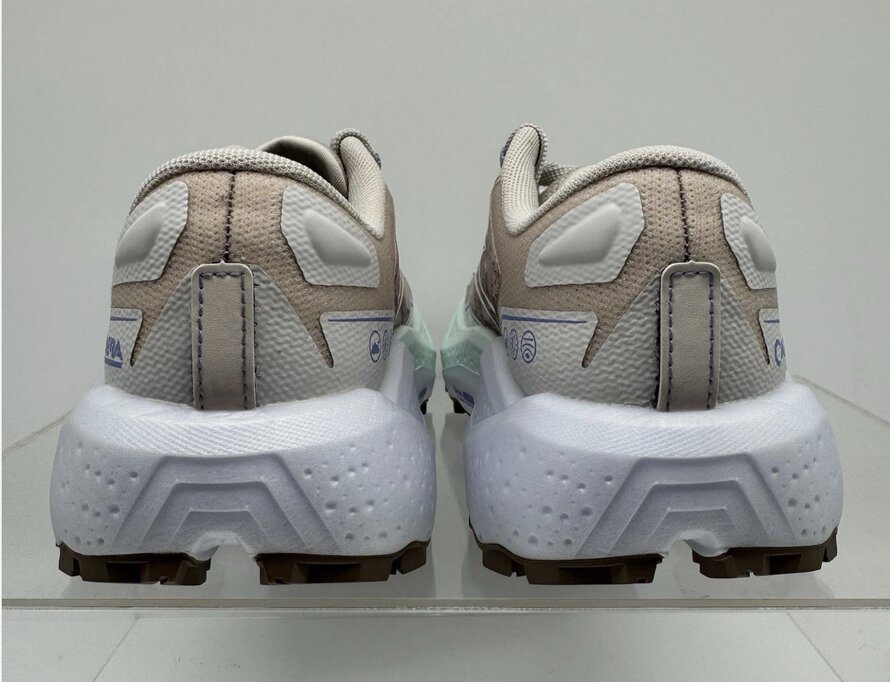
Despite lacking a conventional rock plate, the Brooks Caldera 7 trail shoe manages to provide robust stability for a variety of hiking environments.
The generous platform width and gently flared sidewalls act like an external cage, preventing excessive lateral rolls when crossing rough areas or stepping on gravel and small rocks.
Arch support feels moderate; no overbearing curve, just enough to keep the midfoot from collapsing on extended outings.
The high stack height pairs with the heel counter and heel collar to deliver a stable, locked-in feeling at the rear foot, supporting your foot from landing to toe-off.
If you regularly tackle extremely technical terrain, you might miss a dedicated rock plate for more direct underfoot shielding, but for moderate to tough surfaces, the plush midsole does a pretty good job.
5) Comfort
Comfort is arguably the hallmark of the Brooks Caldera 7. Thanks to the DNA v3 foam, it’s among the brand’s most padded shoe offerings, delivering truly soft cushioning in the heel and collar that can easily carry you through 20+ mile outings.
I appreciated the spacious fit and toe box, which gave my toes ample space and room to spread naturally. While there’s no separate toe cap, the reinforced overlay does protect the big toe from light impacts.
Plus, the padded tongue does a pretty good job of preventing the laces from biting in.
The heel collar and heel counter both cradle the rear foot well, preventing annoying slips. Combining a grippy, foot-friendly design with a flexible bounce in the midsole, this cushioned trail shoe is ideal for individuals who cherish comfort and want to avoid blisters at all costs.
6) Breathability
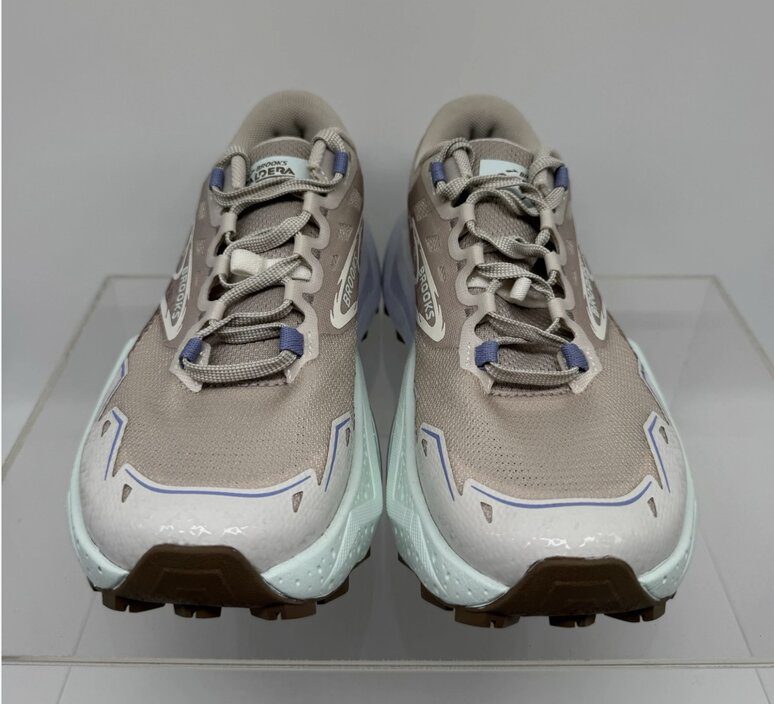
Steamy climates can ruin a trail running experience, which is why the TPEE air mesh upper on the Brooks Caldera 7 trail shoe is such a relief.
Brooks utilized recycled materials while still delivering adequate ventilation.
Even when walking and running in them on scorching days, I was surprised to discover that no excessive moisture built up in the foot chamber.
The gusseted tongue also helps keep small debris out, maintaining a cleaner interior. Granted, if you’re looking for truly airy minimalism, the Caldera 7 is still a moderately built trail shoe, so it’s not as breezy as some lighter, race-oriented shoes.
However, in typical trail conditions, spanning hot afternoons to mild evenings, the breathability is more than sufficient. Just don’t expect it to handle extended wet conditions (or slushy snow) without some seepage.
7) Waterproofing
Because Brooks chose to emphasize airflow over water resistance, the Brooks Caldera 7 isn’t a waterproof shoe designed for full-fledged muddy swamps.
That said, in drizzles or light splashes, it dries faster than many heavily built trail running shoes like the Salomon XA Pro 3D or robust road shoes such as the Brooks Ghost 15.
If you regularly run in wet conditions or expect heavy rainfall, you might combine the Caldera 7 shoe with waterproof socks or pick a shoe that offers a more water-resistant layer like the Salomon XA Pro 3D.
The TPEE can repel light splashes, but once water penetrates, the absence of a specialized membrane means you’ll feel it soaking in.
Most importantly, the interior does drain reasonably well, so you won’t be sloshing around for miles. Ultimately, it’s a shoe that trades absolute dryness for enhanced breathability.
8) Fit and Sizing
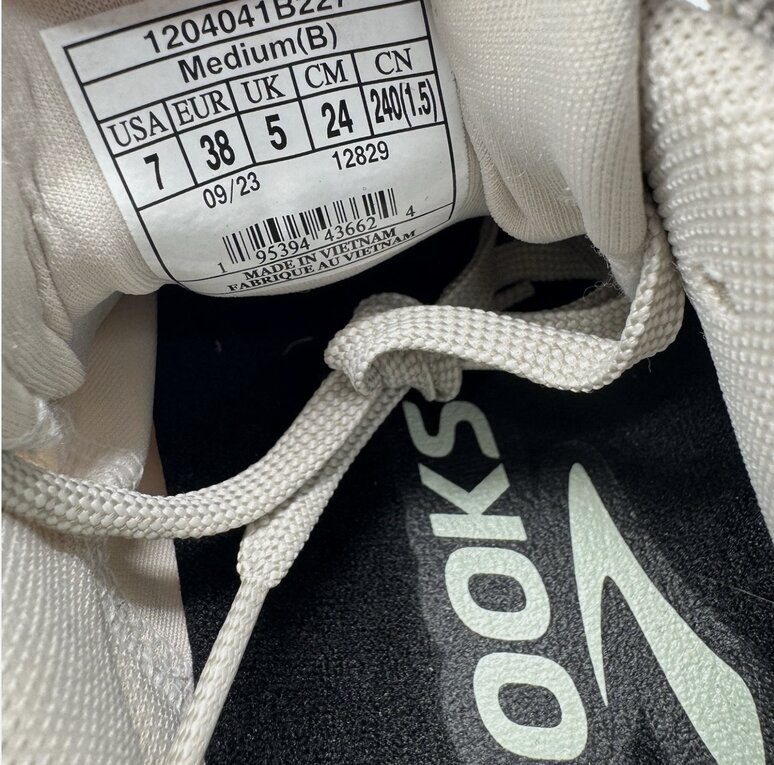
In my experience, the Brooks Caldera lineup generally runs true to size, and the Caldera 7 is no exception.
That said, if you have narrower feet, you might consider going half a size down for a more dialed-in feel—though the adaptable fit from the lacing system (complete with an extra hole for the runner’s knot) can often mitigate minor looseness.
The toe box is quite generous, allowing natural forefoot splay; the heel area also secures well with minimal slipping.
For me, the combination of the laces and the surprisingly adaptable upper design made it easy to lock in a fit that prevented hotspots and blisters in the forefoot, even if the forefoot area felt a bit shallow.
Brooks Caldera 7 Evolution
When comparing the Brooks Caldera 7 to the previous model, the Brooks Caldera 6, the most noticeable change is the switch from DNA v2 to the same foam now labeled as DNA Loft v3—a formula that’s softer and more responsive.
The Brooks Caldera 7 outsole has also been redesigned to offer better traction on varied terrain, while the TPEE upper uses more recycled elements and feels a bit more secure in the forefoot area.
Though the older version had decent durability, the Caldera 7 shoe addresses some stability concerns by adding more width in the base and sidewalls, leading to a shoe that feels more confident on moderate or easy trails.
Brooks Calera 7 Competitors
Time to take a quick look at how the Brooks Caldera 7 measures up against other top trail running shoes I’ve tested recently.
Brooks Cascadia 18

The Brooks Cascadia line has long been lauded as a go-to trail running shoe for those craving a balanced approach to comfort and responsiveness.
Compared to the Brooks Caldera 7, the Cascadia 18 weighs a bit less and feels just a little more agile on technical terrain.
However, it also provides less cushioning for longer distances—the Caldera 7 shoe is notably a more cushioned shoe, both in the heel area and tongue.
If you’re an ultra-distance runner or someone who experiences forefoot fatigue after big-mile days, the Brooks Caldera platform may serve you better, especially with its DNA midsole.
Meanwhile, the Cascadia might attract those who want a blend of moderate stack height, decent rock protection, and a lighter build for speed.
Related article: Brooks Cascadia 18 Review
HOKA Stinson 7
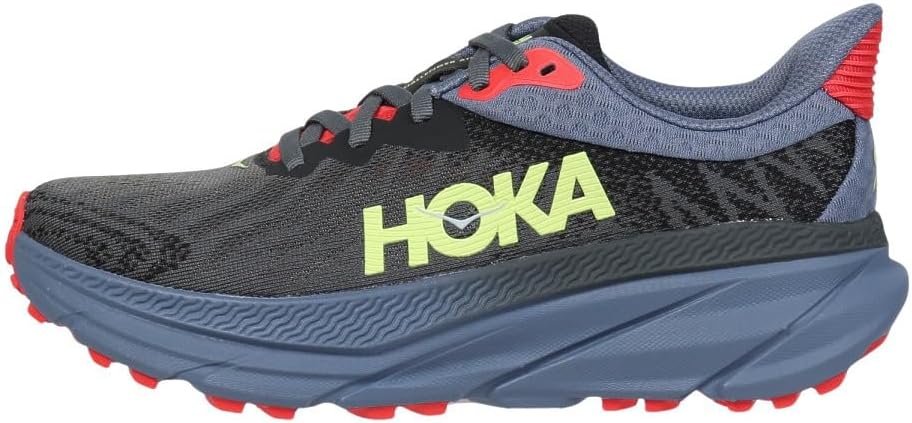
The HOKA Stinson 7 has a reputation as one of HOKA’s most cushioned shoe options, paralleling the Brooks Caldera 7 in that both emphasize plush cushioning in the heel and midsole for longer distances.
If you’re comparing these two for an ultra-distance event or multi-day trek, both deliver an impressively even softness and underfoot feel.
However, the Stinson employs a high-volume design with an early-stage meta-rocker, while the Caldera 7 shoes tend to focus on plushier foam both in the heel and forefoot areas.
In practice, the Brooks Caldera feels less “rockered” and more neutral, which some runners might find more natural.
The Caldera 7 also has a more versatile outsole for transitioning between easy trails and light technical terrain, whereas the Stinson’s weight can become noticeable if the path gets truly technical.
If you crave a wide-toe box and a robust ride, the Caldera 7 might be your pick over the Stinson’s signature, but sometimes unwieldy platform.
Salomon Glide Max TR
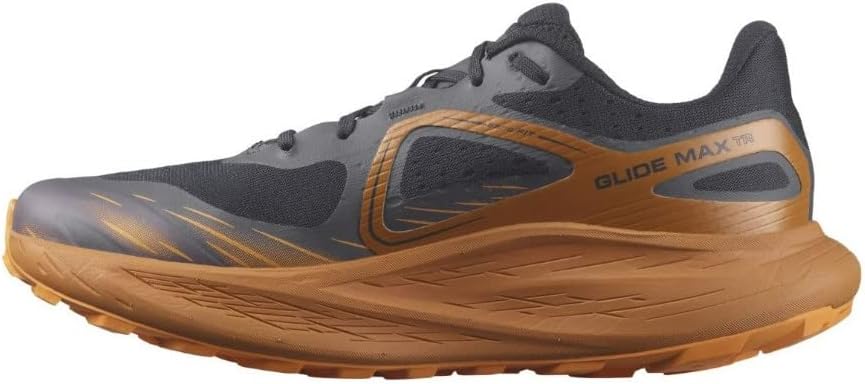
The Salomon Glide Max TR and the Brooks Caldera 7 both aim to provide ample cushioning and a stability-focused ride for trail running.
The Salomon version uses Energy Surge foam, resulting in a snappy transition, while Caldera’s midsole is focused more on a softer, plusher feel.
The Glide Max TR also has a robust Contragrip outsole, which can outperform the Brooks Caldera 7 outsole on technical terrain—particularly in terms of traction on rocky or muddy stretches.
Still, the extra width on Caldera 7’s platform leads to a particularly dynamic push, which is helpful for running uphill on unpredictable surfaces.
If you want a do-it-all trail running shoe that prioritizes a comfortable, more cushioned approach, the Brooks Caldera 7 likely fits the bill. On the flip side, if you want a slightly lighter design and a sharper toe-off for faster paces, the Salomon Glide Max TR might edge ahead.
Brooks Caldera 7 Strengths
From my experience, the Brooks Caldera 7 shoe works best on moderate, non-technical, and easy trails where a smooth ride and thick cushioning can be fully appreciated.
Because of its wide platform, it remains stable when you’re running uphill or descending at slower paces. Trail ultras or any event involving longer distances on dry surfaces will highlight the comfort and protective feel of the DNA v3 foam.
If you log easy miles on well-groomed dirt paths or forest roads, the Caldera 7 helps reduce fatigue, letting your legs stay fresher deeper into a run.
Moreover, its roomy toe box fosters a roomy fit, accommodating natural splay for your toes and preventing blisters in the forefoot area. Combine that with the breathable TPEE upper, and you have a trail running shoe that’s well-suited for hot climates and rolling countryside.
Brooks Caldera 7 Weaknesses
On purely technical trails—think sharp, jagged rocks, slippery roots, and near-vertical climbs—the Brooks Caldera 7 shoe struggles to keep pace with more nimble shoe options.
The absence of a rock plate puts direct underfoot shielding solely in the hands of the thick midsole material, which can leave you vulnerable on extremely rough terrain.
The generous stack height also reduces ground feel, which some high-level trail runners might find off-putting when wanting precise foot placements.
Additionally, in deep mud or sand, the Brooks Caldera 7 outsole can clog up faster than the lugs on more aggressive, minimalist designs.
Water infiltration is another weak spot: the TPEE upper drains well but provides zero true waterproof features.
If you frequently race on wet, highly challenging areas, or crave maximum responsiveness, I’d advise exploring shoes with more locked-in, low-profile designs.
Where to Buy It?
| WHERE TO BUY? | FOR MEN | FOR WOMEN |
|---|---|---|
| REI | N/A | N/A |
| Amazon | See Pricing» | See Pricing» |
| Backcountry | N/A | N/A |
| eBay | See Pricing» | See Pricing» |
FAQs
While there are several highly cushioned shoe models in the Brooks family, many runners find the Brooks Caldera 7 to be among the brand’s softest options, thanks to its DNA Loft v3 foam and wide platform.
The Brooks Caldera lineup is ideal for trail runners seeking ample cushioning, a stable ride, and a broad, comfortable toe box for longer distances. It shines on moderate trail conditions like easy to mid-level paths.


